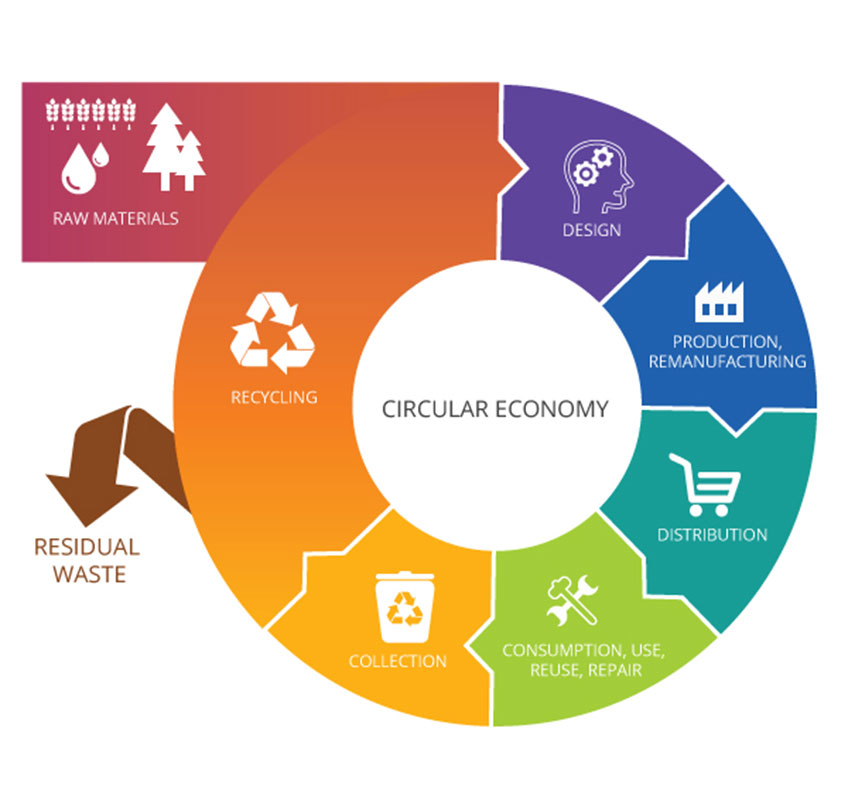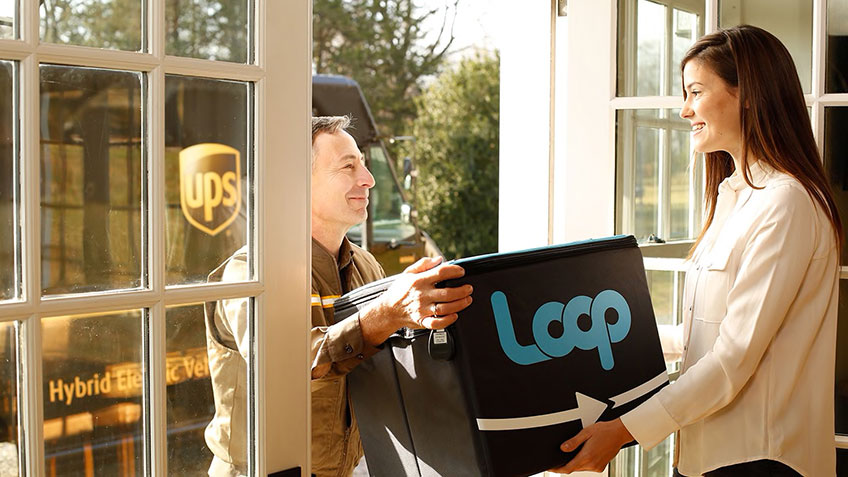The facts are sobering: according to the Ellen MacArthur Foundation, by 2050 the ocean could contain more plastic than fish, and plastics could be consuming 20 percent of oil production and 15 percent of the carbon budget. Only 14 percent of plastic is recycled across the planet – the rest is tossed out, filling landfills, rivers and oceans, and wasting billions in lost materials. All of this points to one thing: we cannot continue to use plastics the way we do today.
The solution is not straight-forward. It will require us to rethink packaging (and other plastic usage) in multiple ways, including new materials and better waste systems. The most environmentally sound solution is to develop a circular economy. Circular packaging is an idea many brands are exploring.
What is a Circular Economy?
Rather than a linear model in which consumers purchase, use and then discard items, a circular economy is one in which materials are not lost, but are restored and reused in a “closed loop.” A simple example would be the milkman: milk is delivered in glass bottles, which are then returned when empty for reuse. The ideal circular packaging system is one in which there is zero waste.

Why Should Brands Work Towards a Circular Economy?
Only a small fraction of plastic materials are recycled. Although we must continue to develop new biodegradable/compostable materials and invest in recycling infrastructure, diverting plastic from waste management systems altogether is a preferable goal. Not only is it a better choice for the environment, but it also makes economic sense. Every year we throw away between 80 and 120 billion dollars’ worth of material that could be reused. The economic value of capturing those materials should be a strong incentive – but it’s offset, at least in the short term, by the cost of building infrastructure, because even in wealthy countries the capacity for recycling materials falls far short of the demand.
However, brands need to do it anyway. The cost of virgin materials will rise, for one thing. But the cost to public relations will be unaffordable as the competition puts circular packaging systems into place. Long term, the investment will pay off financially.
How Hard is it for Brands to Create Circular Economies?
Arguably, it has never been easier. Consumers are more willing than ever to participate in programs that divert plastic from landfills, especially when brands make it easy or offer a reward. For example, MAC cosmetics gives customers a new item for each 6 used containers returned, and H&M offers discount cards to consumers who participate in their garment recycling program.
IKEA, Patagonia, Levi Strauss and Unilever are some big-name brands that are working towards becoming circular economies, recovering everything from product materials to energy created by production processes. It can seem like an overwhelming idea, but it is easier to digest if you think about it in stages.
Stage One: Getting Started
Accept returns of packaging at your retail locations: Cleaning and reusing containers is a simple way to start moving towards a more circular system.
Design for circular systems: Colored plastic, for example, contains impurities that are harder for recycling facilities to successfully remove. Talk to your structural design agency about how to make sure your plastic containers are easier to recycle. Tailor packaging design to use recycled materials rather than virgin plastic.
Stage Two: Mobilizing Through Partnerships
Partner with leaders: Building a completely circular packaging system on your own will be extremely challenging, even for huge brands. Partnering with innovators who are building infrastructure will make it easier. Loop is one of the most exciting leaders in sustainability. The program allows brands to participate in a circular system where household items are delivered to the consumer in durable branded packaging (mostly made of aluminum or glass), which is later collected and cleaned for re-use. Terracycle, Circular Economy Lab, and Closed Loop Partners are also good places to start looking for a circular economy partner.

Stage Three: Investing in the Future
Invest in infrastructure: PureCycle Technologies have developed an advanced process for recycled Polypropylene that removes impurities and makes a resin that can be used just like virgin materials. They are not the only company developing better recycling technology. Brands with scale would be wise to tap into such technologies now and invest in either partnerships or their own facilities. The upfront cost would be mitigated by the demand for materials – PureCycle’s first facility in Ohio has sold out its production for the next 20 years.
The Bottom Line
The time for circular systems has arrived. If you are not thinking about how to integrate circular packaging principles into your business, you are at risk of being left in the dust. As brands begin to figure out how to make circular economies convenient and cost-effective, Gen Z and Millennials consumers will come to expect this kind of practice. IDEO’s Circular Design Guide is a great resource for learning more about circular economies and how you can integrate circular practices into your business.

